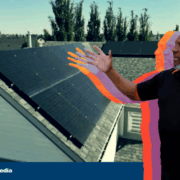The August 21st total solar eclipse across North America has been a hot topic in recent days.
The eclipse tested the increasingly solar power reliant U.S electric grid, in a “dress rehearsal” for a future in which intermittent solar sources have a bigger role in the power supply.
In California, where the sun was partially obscured, about 3,400 megawatts of output rapidly disappeared after 9 am Pacific time, the California Independent System Operator (CAISO) said.
The CAISO delivers 80 percent of the electricity in California. A state that has more solar energy capacity than every other state in the United States combined.
As solar production declined, the California grid manager tapped more supplies from natural gas-fired power plants and hydroelectric dams, and imported power from neighboring states executing plans they have been crafting for months.
“We were really pleased with how smoothly everything went,” a CAISO spokeswoman said. “It bodes well for renewable energy on the grid during an event like this.”
The same can’t be said for the stock market.
The market was affected as many solar energy stocks ended the trading session lower amid higher-than-usual trading volume in the space.
The drop occurred as a total solar eclipse knocked solar energy sources offline throughout much of the U.S.
While we look to the eclipse as the main cause, some analysts cautioned against assigning causation and instead pointed to a trade dispute and potential new tariffs on foreign solar panels.
Jinkosolar stock fell 10 percent.
Canadian Solar was also down nearly 10 percent, though the solar module and solutions company was also downgraded by Barclays.
The Guggenheim Solar exchange-traded fund was down 2.3 percent.
















Comments